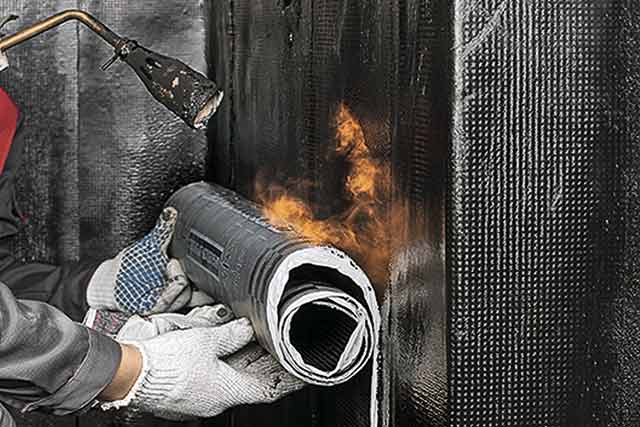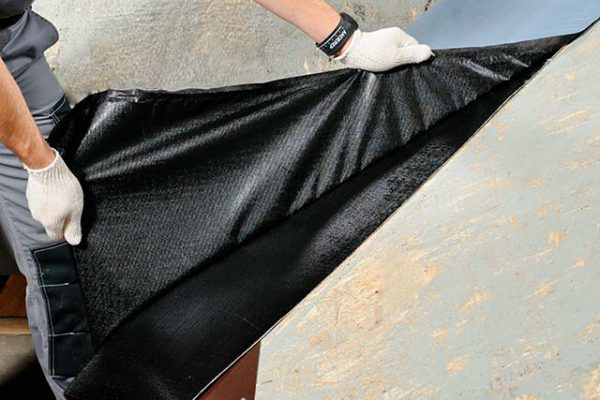Polymer modification of bitumen is an unacknowledged revolution in the construction industry. Polymers are added to asphalt, latex, or acrylic emulsion to improve the properties of roads and roofs. When a polymer-modified bitumen sheet is used, the binders remain elastic at a lower temperature, enhancing workability during cold weather months.
A pothole on a poorly constructed road damages vehicles and affects the economy as loss of revenues occurs when goods cannot be transported; similarly, time wastage due to traffic jams also results in revenue losses for companies.
One way around this is by using polymer modified bitumen sheets (PMBS) for road construction. The sheets provide superior strength that can withstand heavy wear and tear without breaking or fracturing.
How is the Polymer Modified Bitumen Sheet Made?
The process of polymer modification can be done by mixing an asphalt emulsion with a polymer. When the mixture is dry, the sheeting is produced through a hot-press machine which melts and coats a metal sheet with a thin layer of bitumen followed by two layers of reinforcement that are also coated beforehand.
The extra reinforcement at either side prevents damage from occurring on impact due to curbing, construction equipment, or accidents. In addition, during non-freezing times, these sheets ease transportation as they adapt to temperature fluctuations and shrink less than other bituminous sheets when going through expansion joints on roads and bridges.
PMBS has been found to bring about greater longevity and thermal efficiency in roofing applications. It improves self-healing by preventing cracks from spreading while also creating a waterproof barrier that saves energy. Technonicol offers polymer-bitumen membranes for waterproofing of foundations, engineering structures, roads, bridge decks and flat roofs.
Polymer Modification of Bitumen Sheet: Composition and Applications
Every polymer-based compound has unique properties, such as high-water resistance, adhesion strength, and weatherproof qualities. Some common types of polymer used include:
- butyl rubber
- nitrile rubber
- styrene-ethylene propylene diene monomer (SBR)
- polyvinyl acetate (PVAc)
- epichlorohydrin (ECO)
- ethylene acrylate co-polymers (EAM)
The most commonly used bitumen includes recycled SBS modified with butyl acrylate, ABS with ECO, and bitumen naphtha with SBR.
It is clear that PMBS is one of the best kinds of sheets for roofing applications as they have greater strength, are lightweight, and are easier to handle. The sheets are highly durable, which saves on the cost of repairs. Their high capacity to sustain heavy wear contributes to their popularity among road construction companies.
As technology advances, so do these sheets, mainly due to the increased need for non-corrosive roofs that can withstand saline conditions in coastal regions. For roofing purposes, they come in different thicknesses ranging from 10mm to 25 mm per sheet.
What is it Used For?

Polymer Modified Bitumen Sheets are commonly used in roofing applications due to their excellent tensile strength and durability against heat and other elements. The watertight nature and the ability to connect seamlessly make PMBS an ideal choice for covering roofs & industrial floors.
The most common use for PMBS sheets is in road construction. These are lighter than the metal alternatives, so they don’t cause severe road damage or unnecessarily weigh them down. They also provide good resistance against water and wear, making them an ideal choice for highways and other major roads used by vehicles daily.
Which Bituminous Sheet Type Should Be Used?
Certain factors need to be considered depending on the type of bituminous sheet and its application:
Thermoplastic (temperature and time resistance): if there will be an installation exposed to very high or low temperatures, we should choose a bituminous sheet with good thermoplastic properties.
Flexibility (the number of times it can be rolled up and down without breaking): if the road has curves, intersections, ramps, etc., we should choose a bituminous sheet with flexible properties because it will roll well over those shapes without breaking easily.
Resistance to pressure: if heavy vehicles such as big dump trucks would pass over the road, then before laying the sheets, it might be necessary to put a layer of gravel or stones on the ground then put the bituminous sheet over that layer to increase its strength.
This is necessary because even strong sheets can get damaged under pressure, so putting an extra layer will prevent this.
For Roofs
A polymer-modified bitumen sheet should be used because the original bituminous sheet is too soft to bear significant weight. When you use a polymer-modified bitumen sheet, you can expect tensile strength and abrasion resistance.
For Walls
The original bituminous sheets are pretty good because of their excellent tensile strength and abrasion resistance. But polymer modified bitumen sheet has better bearing capacity than the original sheet, so it is widely used for exterior walls where possible cracks may occur over time.
Features of Bituminous Sheets for Road Pavements
Different types of bituminous sheets have different functions:
Eco-friendly bitumen sheet: is mainly used as a cold patching layer on the road pavement. When landing bus stops, railway station square, festival square, and other places with large passenger throughputs, one can use eco-friendly bitumen sheet to build temporary runways.
Modified asphalt sheets: are generally used for surface layers of normal roads or pre-sealing layers. Different modifications have different functions:
- Polymers increase the modulus of elasticity.
- Foamed asphalt increases wear resistance.
- EPDM can help reduce the temperature rise in summer and has a better anti-aging capability.
Polymer modified paving stone: is suitable for road sections that require high load-bearing capacities such as airport runway or taxiway, trucked areas in port yards, etc. It can significantly enhance the performance of road surfaces.
High-performance polymer sheet: is usually used as a road top layer due to its high degree of elasticity and good drainage function. This type of bituminous sheet is mainly applied in the construction of new roads or for rebuilding failed asphalt pavements.
Newly developed rubber modified asphalt can be used as hot mix asphalt (HMA) instead because it has many advantages such as lower initial cost, cost-saving during the aging process, more stable final product quality, enhanced pavement smoothness, and longer service life compared with conventional HMA.
Conclusion
All these advantages have led to PMBS being adopted by most countries worldwide in their respective infrastructure projects. Steel producers have managed to find applications in every region, from small houses to large malls, thanks to their lightweight, quick installation time, and durability under extreme conditions.
Loading recommendations...





The time of year you plan to move can also affect the cost of a moving service. Summer months are the busiest time of year for moving companies, so prices tend to be higher during this time. https://www.youtube.com/watch?v=B6JkuylNjUU
I think You put a best effort to write this perfect article
The extraction of bitumen from natural deposits and as a by-product of the fractional distillation of crude oil both produce bitumen. It has a unique combination of great water-proofing and sticking properties that have been used successfully for more than 5000 years.
Amazing product, and amazing service because you are not wasting time, with your quick installation. If you also need roofing service check this out steel roofing houston
That’s great for coating the vents of fresh air and exhaust in restaurants in big buildings. that is great. Where can I buy this? maybe I’ll use on my mechanic services shop
This article contains a toons of knowledge in it. Truly appreciate it. Keep writing these amazing blog articles for us.
This is a great idea to share your blogs with us because your Article helps us to learn so many things through your blogs. Thank you so much admin for uploading such amazing content with us your blog is really helpful for me. wish you all the best for upcoming comments.